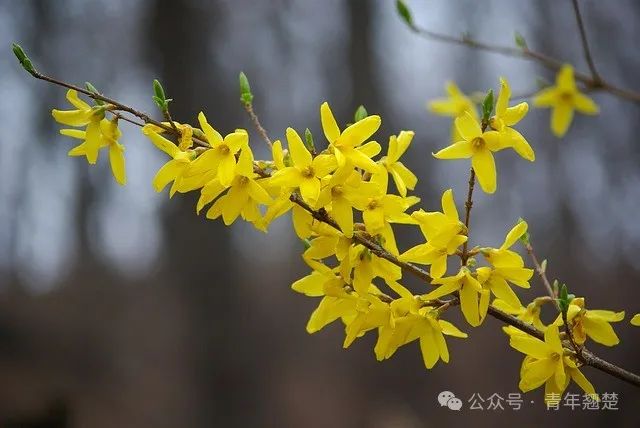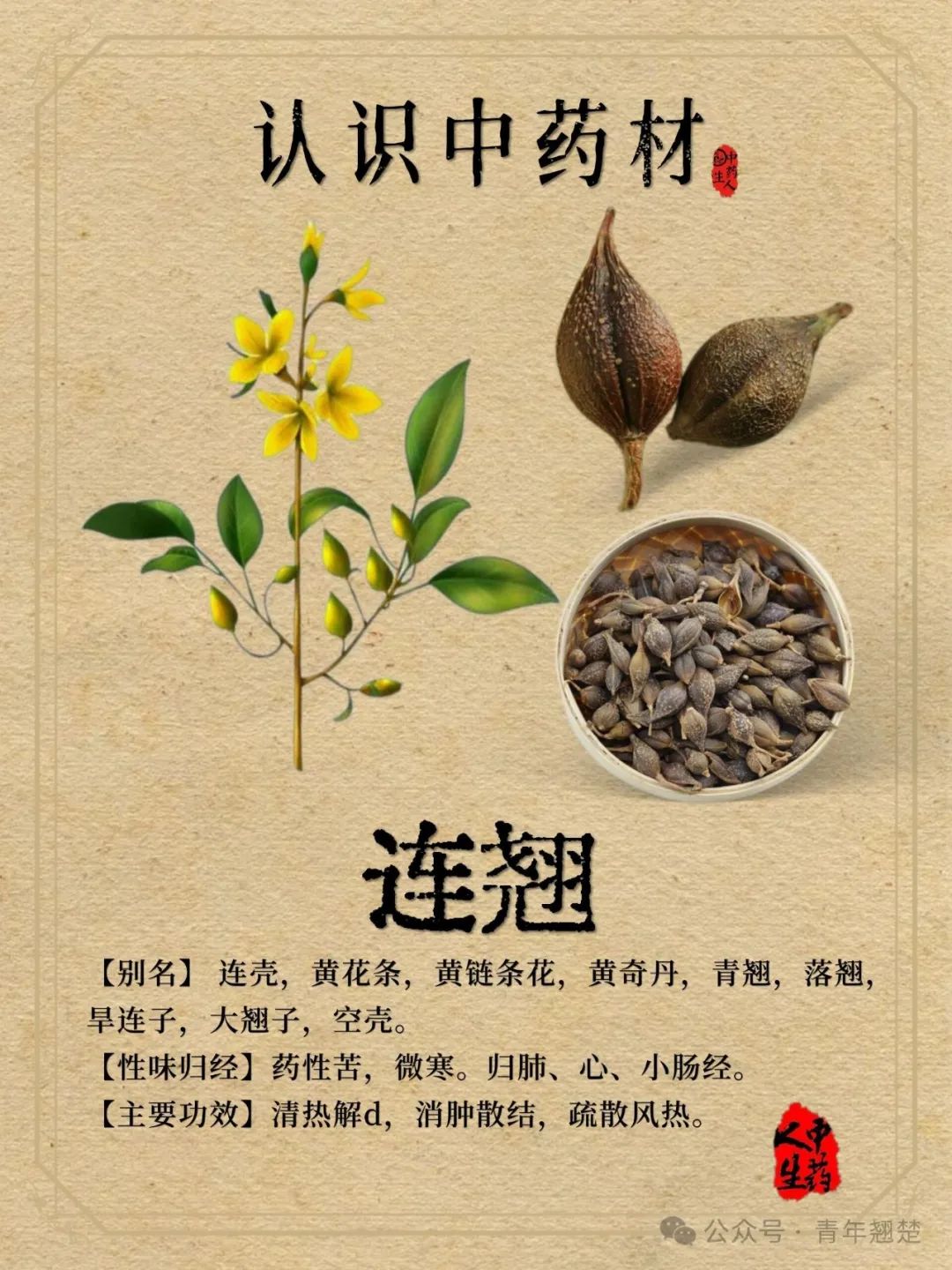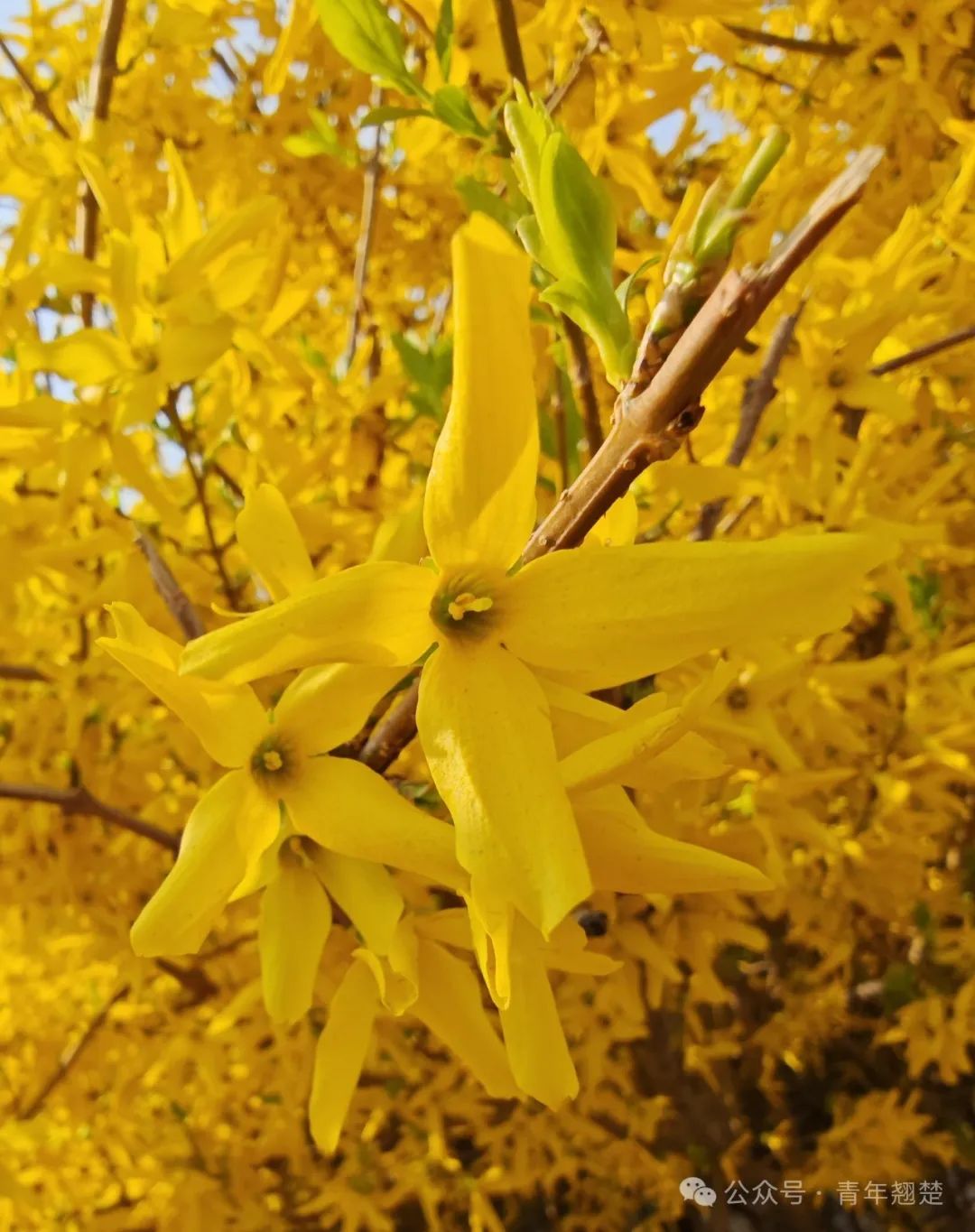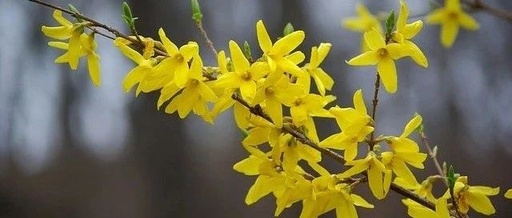Recently, as the temperature gradually warms, the Forsythia flowers are blooming in abundance, painting the mountains and fields in golden hues, attracting numerous visitors to admire their beauty. While enjoying the stunning scenery of Forsythia flowers, let us delve deeper into this remarkable plant.
Basic Characteristics of Forsythia
Morphological Characteristics: Forsythia (Lianqiao) is a deciduous shrub belonging to the Oleaceae family. Its branches grow in clusters, with young branches slightly quadrangular, hollow between the nodes, and solid pith at the nodes. The leaves are opposite, mostly simple or trifoliate, with sharp or coarse serrations along the edges except at the base. The flowers usually grow solitary or in clusters in the leaf axils, blooming before the leaves, with yellow corolla and obovate-lanceolate lobes. The fruit is a capsule, oval to elongated, with a surface featuring pores, maturing from July to September.

Plant Forsythia
Growth Distribution: Forsythia is mainly distributed in provinces such as Shaanxi, Shanxi, Hebei, Gansu, Shandong, Jiangsu, Sichuan, and Yunnan in China, typically growing in shrublands, under forests, or in grasslands at altitudes between 250-2200 meters. It also grows in small quantities in Korea, Japan, and Europe.
Medicinal Value of Forsythia

Traditional Efficacy: Forsythia has the properties of clearing heat and detoxifying, reducing swelling and dispersing nodules, and dispersing wind-heat. It is commonly used in TCM for treating conditions such as carbuncles, lymphadenitis, mastitis, erysipelas, wind-heat colds, initial stages of warm diseases, heat entering the nutritive level, high fever with thirst, delirium with rashes, and painful urinary syndrome due to heat.
Modern Research: Modern medical studies have found that Forsythia also possesses antibacterial, antiviral, and antitumor properties. Its components, including Forsythoside, coumarin, oleanolic acid, saponins, and vitamins, play significant roles in antimicrobial activity, liver protection, anti-inflammation, and cardiovascular system protection.
Economic Value of Forsythia
Traditional Chinese Medicine Industry: The fruit of Forsythia is an important medicinal material. With the development of the TCM industry, the market demand for Forsythia continues to rise, and prices are steadily increasing. For instance, in Lushi County, Henan, the area of artificially cultivated and wild-managed Forsythia has reached 1.05 million acres, with a total resource area exceeding 2 million acres. There are over 30 professional cooperatives for Forsythia, and more than 100,000 farmers rely on its cultivation for increased income.
Other Fields: Forsythia seeds can be extracted for edible oil, making it an excellent woody oilseed species. Its tender shoots can also be processed into tea, which has unique health benefits. Additionally, Forsythia has applications in veterinary medicine and cosmetics.
Ornamental and Ecological Value of Forsythia
Ornamental Value: Forsythia has a beautiful tree shape and abundant flowering, blooming in early spring before the leaves appear, with golden flowers adorning the branches and a delicate fragrance, making it highly ornamental. During the flowering season, the sea of Forsythia flowers attracts many tourists for sightseeing and photography, boosting local rural tourism development. For example, Lushi County has created over 30 popular Forsythia flower viewing bases and launched several premium flower viewing routes.
Ecological Value: Forsythia has a well-developed root system, which plays a significant role in soil and water conservation, effectively preventing soil erosion and contributing to environmental protection.
Conclusion
Forsythia is not only a splash of color in spring but also a “golden link” connecting traditional medicine, ecological protection, and economic development. With technological advancements and industrial upgrades, this ancient plant is rejuvenating, injecting new momentum into a healthy China and green development.
(This article is compiled from industry reports, local policies, and botanical popular science materials, with some data cited from Huajing Industry Research Institute and local government bulletins.)

